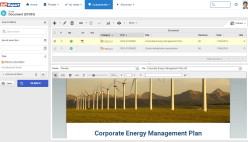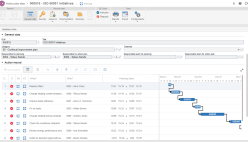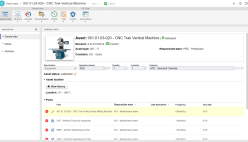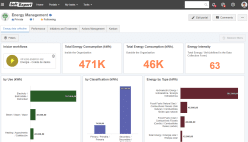ISO 50001 Solution
SoftExpert offers the most advanced and comprehensive software solution for compliance management, that meets the demanding needs of various global regulations. SoftExpert Suite helps companies to comply with ISO 50001, while lowering the costs, maximizing success, increasing productivity and reducing risks.
The SoftExpert solution enables organizations to easily meet ISO 50001 requirements, providing resources to develop policies, fix targets and objectives, analyze and understand data to make decisions and measure the results about energy use, boosting the EnMS efficiency, reducing rework and waste. With online collaboration capabilities, the organization and managers can communicate and be updated about the initiatives for more efficient use of energy, involving more users, teams, offices and business units with a systematic and unified approach that ensure the maintaining and effectiveness of the EnMS.






